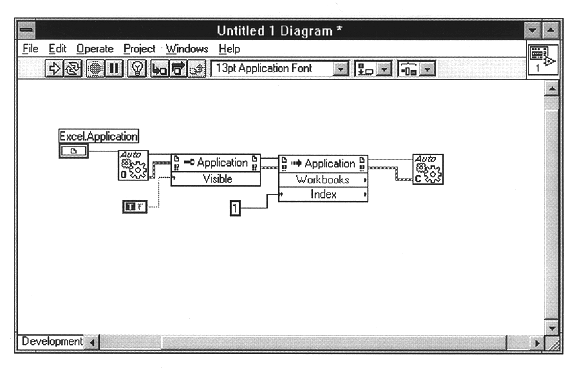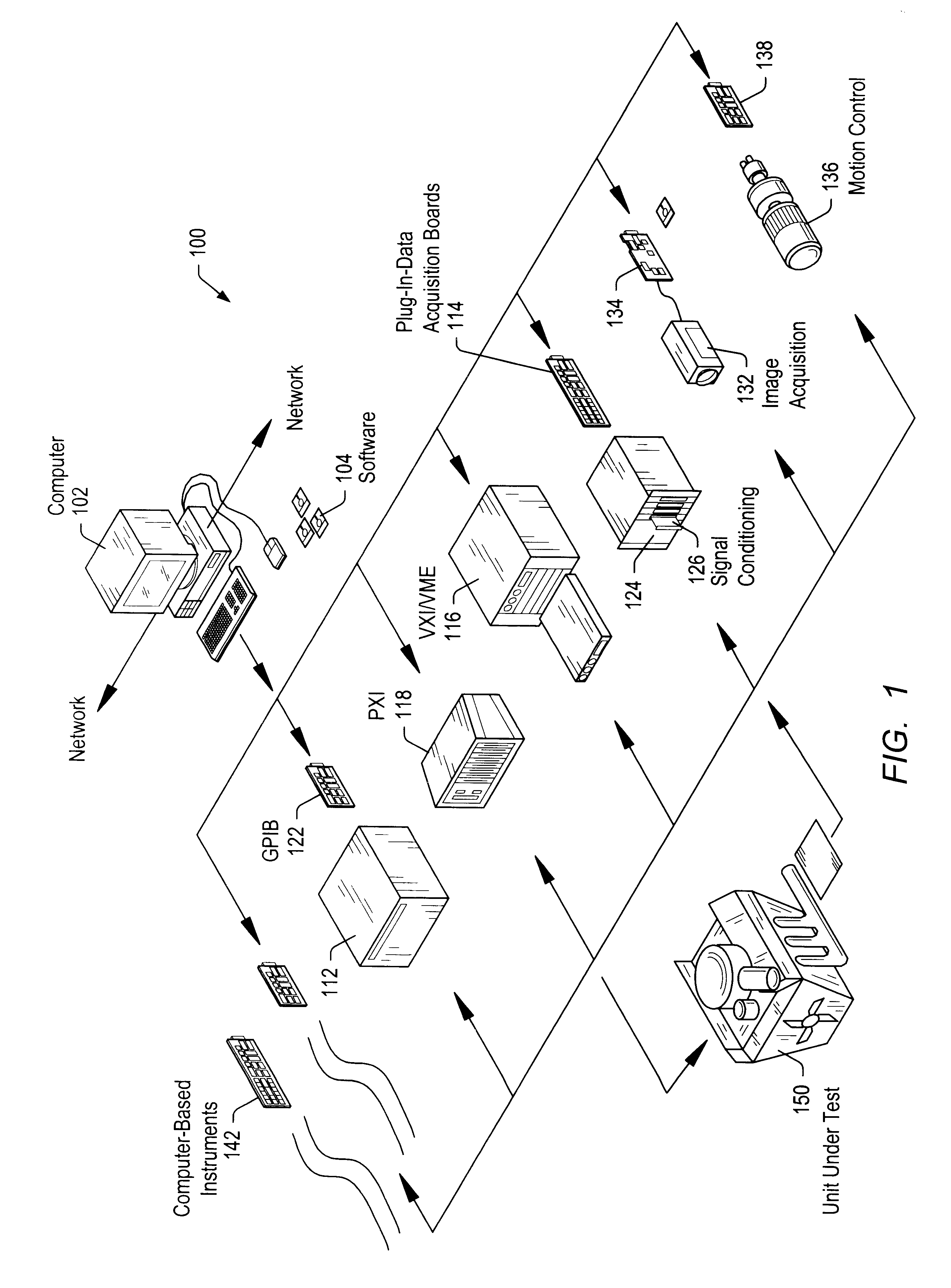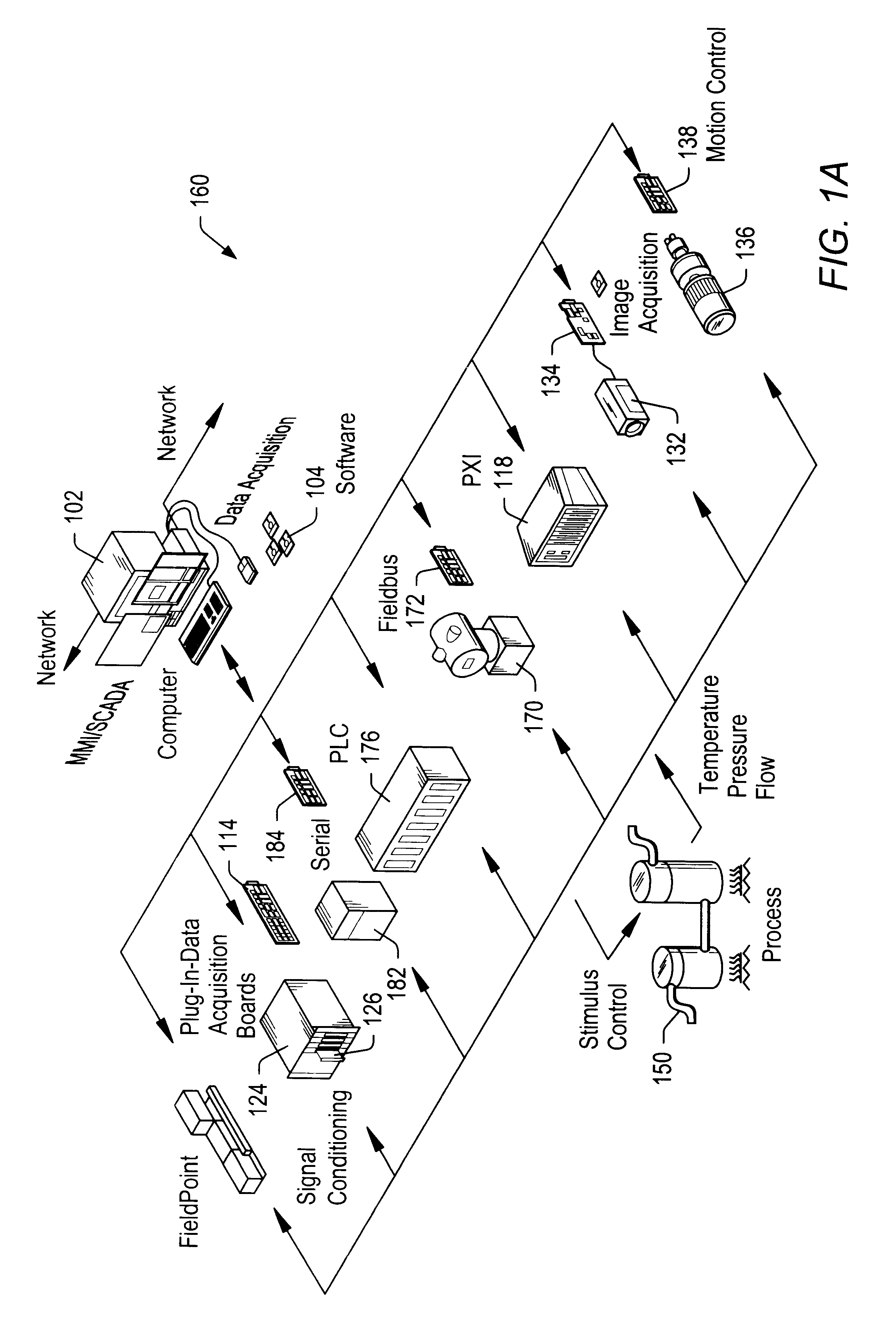System and method for accessing object capabilities in a graphical program
a graphical program and object capability technology, applied in the field of high-level text-based programming languages, can solve the problems of complex task of programming a computer system to model a process, limiting the achievement of optimal utilization of the computer system, and not fully proficient in techniques
- Summary
- Abstract
- Description
- Claims
- Application Information
AI Technical Summary
Problems solved by technology
Method used
Image
Examples
first embodiment
FIGS. 8-36: First Embodiment
Graphical Program Client Creation
FIG. 8 is a flowchart illustrating steps taken to create a graphical program, referred to as a graphical program client or graphical automation client, according to the preferred embodiment of the method. The flowchart of FIG. 8 provides a high level view of the method of the preferred embodiment. The flowchart of FIGS. 8a-8c provide a more detailed view of the method of this embodiment. Thus the flowchart of FIG. 8 provides a high level view of the steps of the flowchart of FIGS. 8a, 8b, and 8c, and corresponding steps are numbered identically. The screen shot of FIG. 6 illustrates an example graphical program created according to the flowchart of FIG. 8. The nodes illustrated in FIG. 7 are example object nodes, referred to as automation function nodes, which are used in the flowchart of FIG. 8. In this description, the terms "automation" and "object" are used substantially interchangeably.
As shown in FIG. 8, the user dro...
second embodiment
FIGS. 37-52: Second Embodiment
FIGS. 37-52 illustrate a second embodiment of the present invention. This second embodiment is a specific embodiment of FIGS. 8-36, where the object whose capabilities are being accessed is an application, such as a graphical program application, e.g., LabVIEW. In this embodiment, the object node is referred to as a "call by reference node". The call by reference node is essentially an invoke node as described above which can invoke or call only a run method on an application. Thus a call by reference node is a specific implementation or subset of the invoke node. It is noted that either an invoke node or a call by reference node may be used in this embodiment, as desired.
FIG. 37--Graphical Programming Environment
FIG. 37 is a block diagram illustrating the relationship of portions of the instrumentation control system 100 and 160 (of FIGS. 1 and 1A). FIG. 37 is similar to FIG. 3 described above, with changes to certain names of the software blocks to il...
third embodiment
FIGS. 51-54: Third Embodiment
FIGS. 51-54 illustrate a third embodiment where the object node comprises a user interface node which manipulates data on objects comprised in the node. In the preferred embodiment, the user interface object node is an ActiveX container.
ActiveX Front Panel Enhancements
In this embodiment, the graphical programming system, e.g., LabVIEW, includes a new control subpalette for the front panel, the Ctls subpalette, which includes two ActiveX controls: ActiveX Container and Active X Variant, as shown in FIG. 51.
These new controls allow the user to take advantage of the ActiveX Container capability, and enhance the interactions between LabVIEW and other applications.
ActiveX Variant Control and Indicator
The ActiveX Variant control and indicator allows passage of Active X Variant data into LabVIEW, so ActiveX client functionality is enhanced. This front panel object is used when ActiveX Variant data is converted to data that LabVIEW can display.
ActiveX Container
T...
PUM
 Login to View More
Login to View More Abstract
Description
Claims
Application Information
 Login to View More
Login to View More - R&D
- Intellectual Property
- Life Sciences
- Materials
- Tech Scout
- Unparalleled Data Quality
- Higher Quality Content
- 60% Fewer Hallucinations
Browse by: Latest US Patents, China's latest patents, Technical Efficacy Thesaurus, Application Domain, Technology Topic, Popular Technical Reports.
© 2025 PatSnap. All rights reserved.Legal|Privacy policy|Modern Slavery Act Transparency Statement|Sitemap|About US| Contact US: help@patsnap.com



